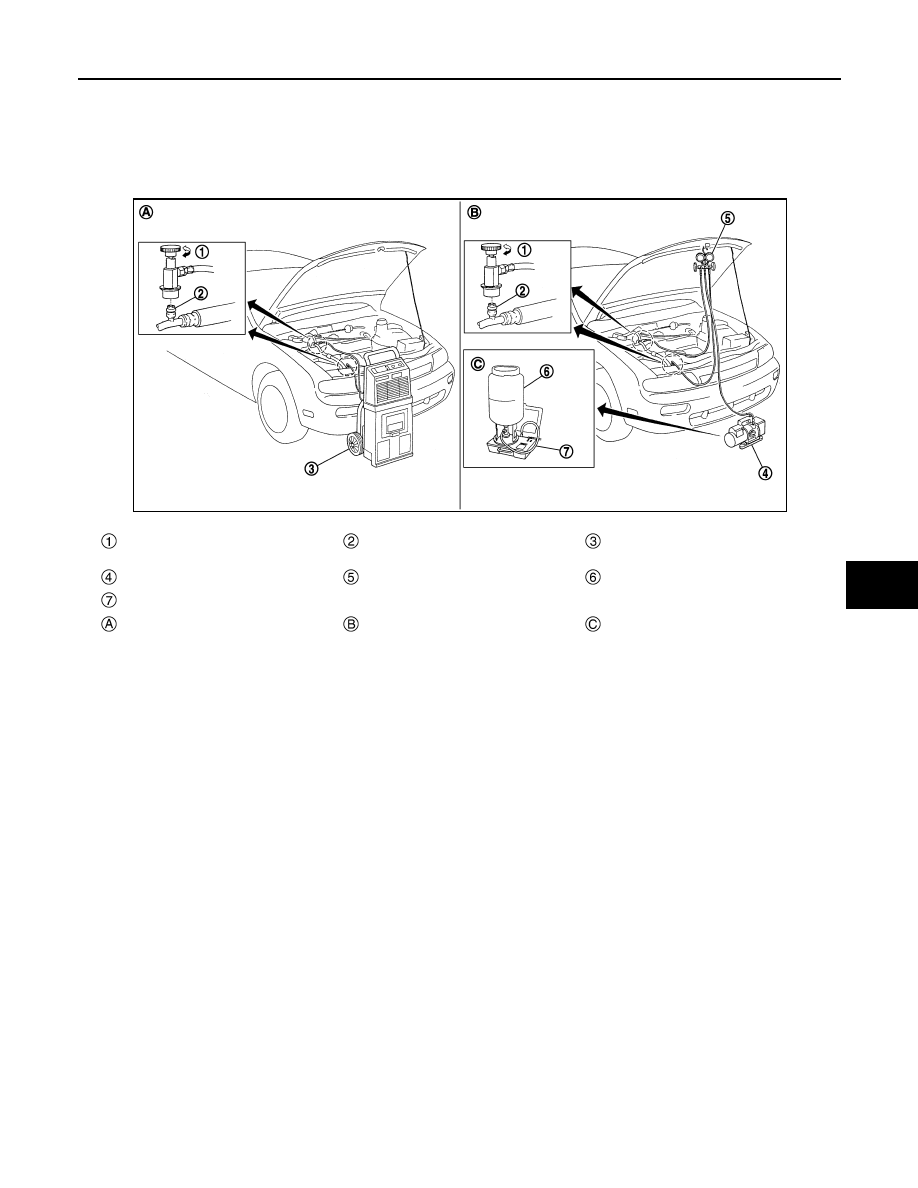содержание .. 1338 1339 1340 1341 ..
Nissan X-Trail 32. Manual - part 1340

REFRIGERANT
HA-19
< BASIC INSPECTION >
[R9M (EXCEPT FOR RUSSIA)]
C
D
E
F
G
H
J
K
L
M
A
B
HA
N
O
P
REFRIGERANT
Description
INFOID:0000000010999974
CONNECTION OF SERVICE TOOLS AND EQUIPMENT
Leak Test
INFOID:0000000010999975
CHECK REFRIGERANT LEAKAGE USING ELECTRICAL LEAK DETECTOR
WARNING:
Never check refrigerant leakage while the engine is running.
CAUTION:
Be careful of the following items so that inaccurate checks or misidentifications are avoided.
• Never allow refrigerant vapor, shop chemical vapors, cigarette smoke, or others around the vehicle.
• Always check refrigerant leakage in a low air flow environment so that refrigerant may not disperse
when leakage occurs.
1.
Stop the engine.
2.
Connect recovery/recycling/recharging equipment or manifold gauge set to A/C service valve.
3.
Check that A/C refrigerant pressure is 345 kPa (3.45 bar, 3.52 kg/cm
2
, 50 psi) or more when temperature
is 16
°
C (61
°
F) or more. When pressure is lower than the specified value, recycle refrigerant completely
and fill refrigerant to the specified level.
NOTE:
Leakages may not be detected if A/C refrigerant pressure is 345 kPa (3.45 bar, 3.52 kg/cm
2
, 50 psi) or
less when temperature is less than 16
°
C (61
°
F).
4.
Clean area where refrigerant leakage check is performed, and check refrigerant leakage along all sur-
faces of pipe connections and A/C system components using electrical leak detector probe.
CAUTION:
• Continue checking when a leakage is found. Always continue and complete checking along all
pipe connections and A/C system components for additional leakage.
• When a leakage is detected, clean leakage area using compressed air and check again.
• When checking leakage of cooling unit inside, always clean inside of drain hose so that the
probe surface may not be exposed to water or dirt.
Shut-off valve
A/C service valve
Recovery/recycling recharging
equipment
Vacuum pump
Manifold gauge set
Refrigerant container (HFO-1234yf)
Weight scale
Preferred (best) method
Alternative method
For charging
JSIIA0258ZZ